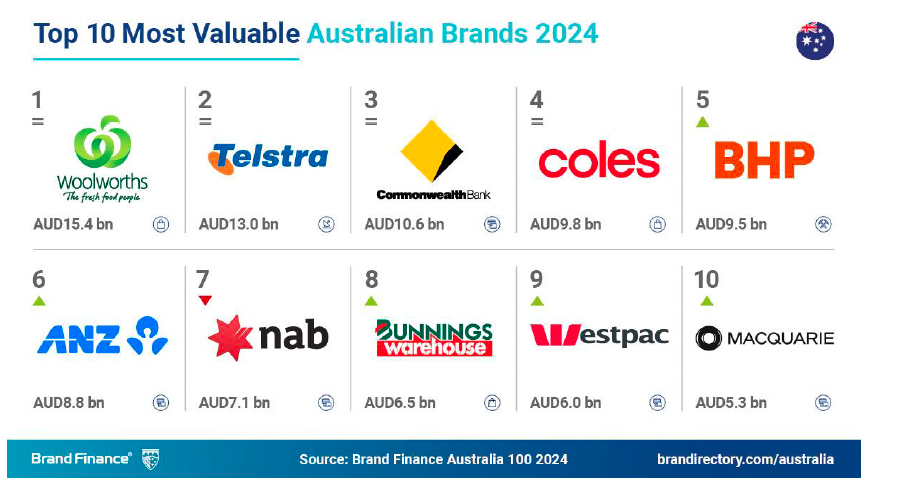The martech delusion: CMOs can’t quantify martech investment ROI, but plan to spend billions more – Australian execs on what’s going wrong, how to fix it

What you need to know:
-
McKinsey’s latest report finds most Fortune 500 marketing leaders are unable to quantify returns on martech spend yet 80 per cent plan to increase investment over the next two years.
-
$215bn by 2027 – but to what end?: Martech spend hit $131bn in 2023 and is on track for $215bn by 2027. But most firms remain stuck at basic maturity levels, automating old habits with bloated, disconnected stacks.
-
Faith and fear drive spend. Despite unclear returns, execs see martech as essential for growth and fear falling behind on automation and personalisation – fuelling a cycle of tech accumulation without integration.
-
Brand-side martech leaders, along with agency implementers, both flag the failure to develop use cases, and chase genuine business metrics as the key culprit for poor ROI among Australian enterprises.
-
AI is martech’s ‘second chance’. McKinsey says AI could finally stitch martech together, turning fractured stacks into adaptive, intelligent systems – but only with strong leadership and a clear link to business outcomes.
-
The orchestration layer is the next battleground. Martech sector guru Scott Brinker agrees with McKinsey’s vision of an AI-powered control plane. He warns, however, that giants like OpenAI could dominate unless firms retain independence.
-
Complexity is killing capability. With up to 15,000 tools on offer, stack sprawl is rampant. Nearly half of martech decision-makers cite complexity as the main barrier to effectiveness, leading to duplication, disjointed data, and uncoordinated campaigns.
-
Leadership lagging. Martech is often buried in IT budgets and divorced from marketing strategy. McKinsey urges companies to elevate martech to the C-suite and treat it as a strategic growth engine – not a cost centre.
Martech solutions are typically stood up, integrated, designed, and embedded as part of a program structure… however, problems start to occur when those program resources and their skills are sent packing, often prematurely.
For a discipline built on data, marketing technology continues to experience a critical blind spot: it cannot measure its own worth, according to McKinsey and Company, per a new paper called Rewiring Martech: From Cost Centre to Growth Engine.
In an especially damning indictment, not one of the fifty Fortune 500 marketing chiefs the consultancy interviewed could clearly articulate the return on their martech investments. Instead, in a finding harkening back to the bad old days of The Colouring In Department, most leaders pointed to operational trivia, open rates, impressions, and click-throughs.
Many of the martech executives MI3 spoke with agreed with that assessment.
Satya Upadhyaya, who has led martech efforts at companies like NAB, Cochlear, and most recently ANZ, told Mi3, “The reason why many companies are not able to measure ROI, is because they’re not able to define the specific use cases as to why they bought the tech.”
There is also a bit of self-preservation at work, he suggested. “Because the use cases were not defined properly, and because they can’t measure the ROI, the cost of ownership for that product increases. Then they realise that they could have done it better, simpler, faster, with an alternate provider had they done a bit more due diligence.”
“They don’t want to go back and uncover [problems] with decisions that they’ve already made.”
Firms also often lack people with the right experience or capabilities to ask the right questions, Upadhyaya said.
“In terms of procurement, who are the people that you’re talking to within your organisation who could justify this value of investment? Are you only speaking to the board, or the top C-level people, or are you actually consulting the hands-on staff, the people that actually face the problem – whether it’s the marketer, the analyst, the data team, the decisioning teams.”
National Head of Transformation at OMD, Taylor Svarc, likewise subscribes to the use case theory.
She told Mi3, “They’re not thinking use case first. They’re thinking tech solution first. And that’s why I think the tech gets blamed all the time. I’ve seen a lot of businesses that I’ve worked with over the years bring in new, really expensive, big technology. But the same problems recur because the way they work, the governance and the connection across the teams, doesn’t change.”
She added: “Companies that do not understand what success looks like risk failing from the get-go. It can’t just be ‘We’re trying to deliver personalisation’, it has to be about what do we want to achieve through personalisation, and then you look at how you’re going to do that. And that comes back to the use cases.”
Marketing leaders Mi3 spoke with also flagged leadership cultures that will spend on kit but not on capabilities. That’s also something Svarc says is a more common problem than it should be. “You need to invest in the right talent and capability, and not just think that it’s an add-on when you’ve already bought the tech.”
The consequences of not understanding ROI are predictable. When marketing technology cannot demonstrate a credible link to revenue, margin, or lifetime customer value, the C-suite sees it not as an engine of growth, but as another cost of doing business.
Svarc offered an anecdote that suggests that reframing the ROI conversation can drive success: One of her clients was told by its management that they had one year to prove the worth of the CDP or the project would be shuttered.
“The client’s team was told ‘This is the number you have to hit within a year. You need to deliver this much revenue through this technology.’ There had never been any ambition around the commercial goal previously. Instead, they would talk about personalising messages, or understanding the customer. And just by giving a team of really smart people a financial goal, they did it.”
Small scale, high price
Australian firms face an additional burden. They are paying prices for martech solutions based on US market scale, but they have to extract value from a much smaller market.
According to Jakub Otrząsek SVP, Data and Platforms at Monks, “We have seen quite a few RFPs for different types of platforms, which we haven’t pursued because we simply couldn’t do the math. With the average size of the customer, the potential lift will never generate an ROI. After mParticle was acquired by Rokt, they put the prices up and now they are losing customers, left, right and centre.”
He said a number of Tier 2 and 3 vendors have started withdrawing from the local market – he specifically called out Acoustic, which put its local team to the sword in September. “These vendors are struggling across Asia and withdrawing and focusing on the United States. Australia has the proximity to wider Asia, and Asia is super price sensitive. Asian firms are driving the price of tech really, really down, but Australians pay the premium for the lack of scale.”
There’s another problem, he suggested. Understanding ROI is simply not a top-of-mind concern, he said, noting that while CMOs are investing heavily in platforms like MMMs to understand the impact of media spend, there is less focus on the impact of tech spend.
“Absolutely zero of customers ever asked us if it is possible to add martech investments into the modelling.”
Short term mindset
According to Lisa Dickson who has led major transformation projects at companies such as Bupa, AGL and Optus and now works as a fractional CMO, “Martech solutions are typically stood up, integrated, designed, and embedded as part of a program structure.”
This makes sense for businesses that are trying to transform whilst already ‘flying the plane’, she said. “However, problems start to occur when those program resources and their skills are sent packing, often prematurely.”
The focus on tools at the expense of process and people is also often problematic.
Per Dickson, “The change cycle is more than about understanding how the tools mechanically work. It’s about how to structure newly enabled experiences through the tools in different ways.”
To do this, she said, operational processes have to shift from businesses briefing their tech departments towards an ongoing collaborative exchange between the two to realise the art of the possible.
“Execution needs to be collaborative across channels, across marketing and CX teams, across customer service layers. So without ongoing KPI alignment, governance and ongoing knowledge building as tools and surrounding skills evolve, the martech either dies its sad and slow death – or it just never gets over the hump of ‘getting started.”
“That means it is never able to realise the full efficiencies available, and [provide] new growth levers.”
Dickson said it could simply be more cost-effective to keep the skills required in the first place. “But to do that, organisations have to be willing to accept a slightly higher premium per head – then hold them accountable for outcomes.”
The point is that value does not come from tech alone, she stressed.
“For instance, the investment in personalisation must be made up of people, process, tech in equal parts … And strategy! Tech enables customer strategy, but does nothing without it. Martech is also a bunch of empty boxes on a page without good quality high-density data flowing through it.”
Traditional predictive models and business rules work when you know the customer journey ahead of time. But in the real world, customer interactions aren’t that clear-cut. Rules-based systems might make a call, but it could easily be the wrong one.
FOMO and faith
Curiously, the crisis of confidence revealed by the McKinsey study has done little to slow the spending. According to McKinsey’s report as many as 80 per cent of firms expect to increase spend and within that, 45 per cent expect an 11–25 per cent increase.
So why does McKinsey believe that firms keep investing in systems whose returns cannot be proven? The management consultant offers two reasons.
The first is faith: nearly nine in ten C-suite decision-makers still believe that “best-in-class tools” are essential to achieving strategic goals such as revenue growth and customer loyalty. The second is fear: executives worry that standing still risks falling behind in the race to automate and personalise. Martech has become both status symbol and an insurance policy.
The result is a market expanding faster than its competence. As platforms multiply, 15,000 tools and counting according to the analysts at Chiefmartec, companies chase the illusion that another plug-in or predictive model will finally make sense of their customer data. Each new system promises to fix the integration woes created by the last one. Few pause to ask why the stack is so unwieldy in the first place.
Martech’s spending boom, on McKinsey’s reading, is less a triumph of evidence than one of expectation.
The transformation delusion
In 2023, firms poured more than $131 billion into martech platforms chasing the promise of real-time personalisation and automation nirvana. The market is on track to hit $215 billion by 2027. Yet for all that investment, McKinsey finds most companies remain stuck at the “developing” or “operational” stages of maturity. A third call themselves “transformational”, but interviews suggest that descriptor collapses under scrutiny. Most are still automating yesterday’s habits, such as batch emails, rules-based segmentation, and A/B tests, while paying lip service to genuine innovation. And the gap between perception and reality yawns widest at the top, according to the study.
Marketing chiefs, conditioned by decades of media-buying metrics, still chase visibility over value. And worse, martech often hides in the IT budget, severed from marketing strategy and accountability.
As the chief marketing and sales officer of a global automobile company confessed to McKinsey, “Very few companies in our industry have figured out how to clearly delineate the responsibilities of marketing, ownership of the customer journey, and digital.”
Complexity without comprehension
Complexity is the great enemy. The very largest firms now juggle hundreds tools across data, content, commerce, and measurement. While each is meant to simplify marketing, together those tools render it unmanageable. (There’s a reason former Commbank CMO Andy Lark once lamented that the answer to the problems of martech is always ‘more martech’.”)
Nearly half of martech decision-makers cite stack complexity as their biggest barrier. The result is familiar: disjointed data, fragmented identity graphs, and campaigns that never quite talk to each other. Rather than rationalise, firms accumulate even more software. The tech debt rises as new platforms are layered on top, and nobody dares turn anything off.
AI is a do-over, not a miracle
The real issue, McKinsey argues, is not technical but human. Thirty-four per cent of executives admit they lack the skills to extract value from their own systems.
McKinsey calls for martech to be elevated to be governed, measured, and funded like any strategic growth engine. That means linking spend to hard business outcomes, consolidating overlapping tools, and using AI as an orchestrator rather than another shiny addition to an already crowded stack.
AI offers the possibility of a reset, according to the report’s authors, who say that AI will act as an intelligent conductor linking the data, decisioning, design, and distribution layers of marketing systems. In other words, AI becomes the orchestration layer.
By automating integration, surfacing redundancies, and coordinating specialised agents, it could simplify martech’s unwieldy machinery and finally allow it to operate as one adaptive organism. According to McKinsey, the martech stack of the future will look less like a pile of disconnected tools and more like a nervous system, coordinated, adaptive, and alive with data.
Can AI save everything?
The firm predicts that artificial intelligence will take over much of the grunt work of integration, stitching together once-fragmented platforms into a single, intelligent operating model. The jumble of customer databases, content engines, and analytics dashboards will give way to a leaner architecture governed by an “agentic orchestration layer.”
Think of that as a kind of control plane where specialised AI agents manage data cleansing, optimise decisions, generate creative assets, and fine-tune distribution in real time. In theory, this will turn today’s marketing stacks, cluttered with redundancy and friction, into responsive systems that can sense and act on customer behaviour instantly
Dickson, for one, agrees with the sentiment that orchestration is key: “I have seen that with the AI implementations that I have been a part of. But I don’t think that is all that AI is capable of. You want to be sure AI isn’t just making outdated strategies more efficient – it should be a path to reimagining.”
She said, “I’m having endless conversations with people at the moment who think they are explaining their AI needs but actually they are describing automation, data modelling, or machine learning at best. Also, nothing spells ‘collaboration’ like ‘orchestration’ and that’s precisely where many firms have struggled so far – hence my caution”
“However, my glimmer of hope with AI is that many of the strategy discussions on the topic are happening at the board and CEO levels. Knowledge is growing at the right level which gives me confidence that the right questions will ultimately filter down as journeys evolve. Martech has not been afforded this same level of scrutiny or support, and therefore, much of the necessary governance and accountability is not there.”
According to Simon Belousoff, AI strategist at an Australian financial services firm who has led key customer engagement workstreams across multiple enterprise transformations, the real opportunity for agentic AI lies in its ability to interpret “in-the-moment context”, to sense emotion or confustion, ask clarifying questions, and adjust on the fly.
“Traditional predictive models and business rules work when you know the customer journey ahead of time,” he explained. “But in the real world, customer interactions aren’t that clear-cut. Rules-based systems might make a call, but it could easily be the wrong one.”
Large language models, he said, can sense sentiment, recognise uncertainty, and seek guidance rather than blindly execute. “If a customer’s search behaviour suggests they’re lost or struggling, an agentic system can step in with a more contextual, human-like interaction.”
Context is everything
Belousoff described context as the next frontier in customer experience. “The trick is capturing enough of it, and accepting that you’ll never capture all of it at a single point in time. You start with what you have, then build capture points so context becomes a living, growing thing.”
Humans, he added, are experts at “trimming” – ignoring what doesn’t matter and focusing on what does. “That’s the hard part for machines. You need to guide agents over time so they learn what to keep and what to drop.”
Scott Brinker, the martech sector doyen whose figures about the scale of the ecosystem appear to have informed the study, says McKinsey’s view of how the stack will evolve is “a pretty good estimate.”
Writing on LinkedIn, Brinker asked, “Will the AI giants (OpenAI, Anthropic, Google, etc.) take over other boxes on this chart? Possibly. The Large Action Models box is probably the most likely.”
He said he expects areas such as Offer Libraries (the evolution of MAP) and Digital Asset Management (DAM) would remain squarely in the martech sector, since they are so specific to marketing.
However, he noted, “The Customer Data Platform (CDP) box is much bigger than marketing, and if we don’t haggle over the definition of what is or isn’t a CDP and just picture this as the operational customer data plane, writ large, I think this category will grow and thrive. AI needs this to succeed.”
As for what is increasingly being seen as the biggest prize of all – the orchestration layer, Brinker says, “That too is much, much bigger than marketing.”
He suggests the AI giants may make a play for this, citing OpenAI’s Agent Kit as what he calls an early seed of this. “But I think doing this really well is a very different kind of business. And for companies, it will be to their benefit for this to be independent of the LLMs to avoid vendor capture.”
If McKinsey’s view materialises, the effect could be transformative. Marketing could evolve from a campaign factory into a real-time learning system one that is faster, smarter, and attuned to every customer twitch (a finding consistent with Mi3, soon to be released Agentic AI report).
McKinsey sees this as marketing’s “second chance” to deliver on its original promise: not more noise, but a continuous conversation between brands and the people they serve.





